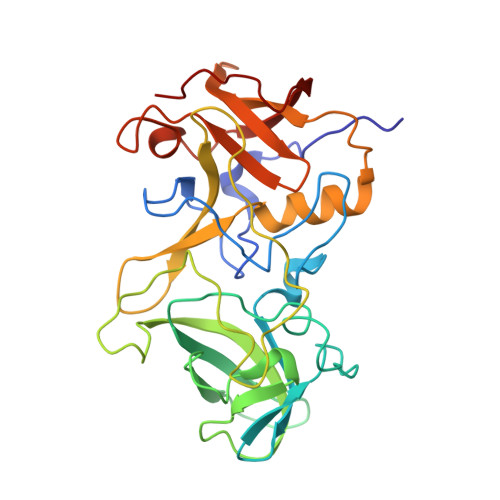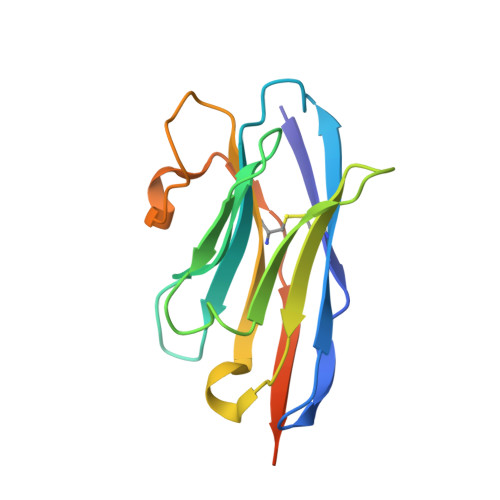Structural Basis of Nanobodies Targeting the Prototype Norovirus.
Ruoff, K., Kilic, T., Devant, J., Koromyslova, A., Ringel, A., Hempelmann, A., Geiss, C., Graf, J., Haas, M., Roggenbach, I., Hansman, G.(2019) J Virol 93
- PubMed: 30602609
- DOI: https://doi.org/10.1128/JVI.02005-18
- Primary Citation of Related Structures:
6H6Y, 6H6Z, 6H70, 6H71, 6H72 - PubMed Abstract:
Human norovirus infections are a major disease burden. In this study, we analyzed three new norovirus-specific Nanobodies that interacted with the prototype human norovirus (i.e., genogroup I genotype 1 [GI.1]). We showed that the Nanobodies bound on the side (Nano-7 and Nano-62) and top (Nano-94) of the capsid-protruding (P) domain using X-ray crystallography. Nano-7 and Nano-62 bound at a similar region on the P domain, but the orientations of these two Nanobodies clashed with the shell (S) domain and neighboring P domains on intact particles. This finding suggested that the P domains on the particles should shift in order for Nano-7 and Nano-62 to bind to intact particles. Interestingly, both Nano-7 and Nano-94 were capable of blocking norovirus virus-like particles (VLPs) from binding to histo-blood group antigens (HBGAs), which are important cofactors for norovirus infection. Previously, we showed that the GI.1 HBGA pocket could be blocked with the soluble human milk oligosaccharide 2-fucosyllactose (2'FL). In the current study, we showed that a combined treatment of Nano-7 or Nano-94 with 2'FL enhanced the blocking potential with an additive (Nano-7) or synergistic (Nano-94) effect. We also found that GII Nanobodies with 2'FL also enhanced inhibition. The Nanobody inhibition likely occurred by different mechanisms, including particle aggregation or particle disassembly, whereas 2'FL blocked the HBGA binding site. Overall, these new data showed that the positive effect of the addition of 2'FL was not limited to a single mode of action of Nanobodies or to a single norovirus genogroup. IMPORTANCE The discovery of vulnerable regions on norovirus particles is instrumental in the development of effective inhibitors, particularly for GI noroviruses that are genetically diverse. Analysis of these GI.1-specific Nanobodies has shown that similar to GII norovirus particles, the GI particles have vulnerable regions. The only known cofactor region, the HBGA binding pocket, represents the main target for inhibition. With a combination treatment, i.e., the addition of Nano-7 or Nano-94 with 2'FL, the effect of inhibition was increased. Therefore, combination drug treatments might offer a better approach to combat norovirus infections, especially since the GI genotypes are highly diverse and are continually changing the capsid landscape, and few conserved epitopes have so far been identified.
- Schaller Research Group at the University of Heidelberg and the DKFZ, Heidelberg, Germany.
Organizational Affiliation:




















